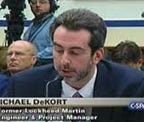Eric, while you have made some improvements in your pursuit to build an autonomous vehicle I believe you are still operating in the same paradigm. I suggest that needs to be changed drastically. If Uber is not able to do that it will literally never get close to creating an autonomous vehicle, go bankrupt trying and will harm far more people for no reason.
It is not remotely possible, to get anywhere near creating a legitimate autonomous vehicle using public shadow driving as your primary approach to training and testing AI. It is impossible to drive the one trillion miles or spend over $300B to stumble and restumble on all the scenarios necessary to complete the effort. Many of which are accident scenarios no one will want you to run once let alone thousands of times. You also cannot survive the thousands of needless casualties you will create trying. And finally, as the public, press and soon governments are figuring out, handover cannot be made safe for most complex scenarios, by any monitoring and notification system, because they cannot provide the time to regain proper situational awareness and do the right thing the right way.
Root Causes and Solutions
· Use of Public Shadow Driving vs the use of proper simulation 99% of the time — It is a myth that you can drive and redrive, stumble and restumble on enough scenarios, enough times, to get close to building a legitimate autonomous vehicle. RAND says 500B miles at 10x a human. Toyota said a trillion miles. (To do that in 10 years would cost over $300B.) Then there are the safety issues. Those regarding handover and running accident scenarios. Handover cannot be made safe no matter what monitoring and notification system is used. That is because enough time cannot be provided to regain proper situational awareness in critical scenarios. The other issue being thousands of accident scenarios will have to be run thousands of times over to train the AI on those scenarios. That will cause thousands of needless casualties. (Waymo, Ford, Volvo and Aurora have stated handover is dangerous and should not be used. However, each still relies on it because they do not understand how to do this properly.)
· The Simulation being used in the industry has significant shortfalls — Among them being real-time and latency issues. As well as imprecise vehicle, tire and road models. These will lead to significant false confidence. Which will not be found until analogous real-world tragedies occur. (Another related issue is not using full motion simulators. Motion cues are crucial. Be that the presence or lack of them. Without them you cannot train or test properly.)
· Using a bottoms up Agile approach — Agile does not work when systems are large and complex. Not adding a top down systems integrated approach will cost a massive waste of time and money. The hardest scenarios should be worked on at the same time as the bottoms up effort. Usually when the most difficult scenarios work everything below them does as well. And often design and execution flaws are found that translate to rework at the lower end. Too much rework and you will be crippled as well. Aerospace and DoD systems engineering practices should be leveraged here.
· Not creating and using an End -State Scenario Matrix — The validators as well as the builders need to see what done and the most difficult scenarios look like now. Test cases or scenarios , especially those related to operating domains, should also be made public and/or covered by a proper third party. FAA practices should be the guide for this.
The Crash of the Autonomous Vehicle Industry
Uber isn’t the only Autonomous Vehicle maker who should fear killing a child
My name is Michael DeKort. I am a former system engineer, engineering and program manager for Lockheed Martin. I worked in aircraft simulation, the software engineering manager for all of NORAD, the Aegis Weapon System, and on C4ISR for DHS. I also worked in Commercial IT and Cybersecurity.
I am a member of the SAE On-Road Autonomous Driving Validation & Verification Task Force
I have also been presented the IEEE Barus Ethics Award
